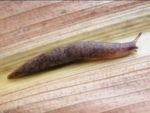Advertise Follow Us
Articles Tagged with ''armyworms''
What I've Learned from No-Tilling
Balancing Nutrients Restores Soils While Raising No-Till Yields
Cover cropping every acre, along with several applications of nitrogen and manure, allow Steve Berger to protect his land and raise healthy crops.
Read More










